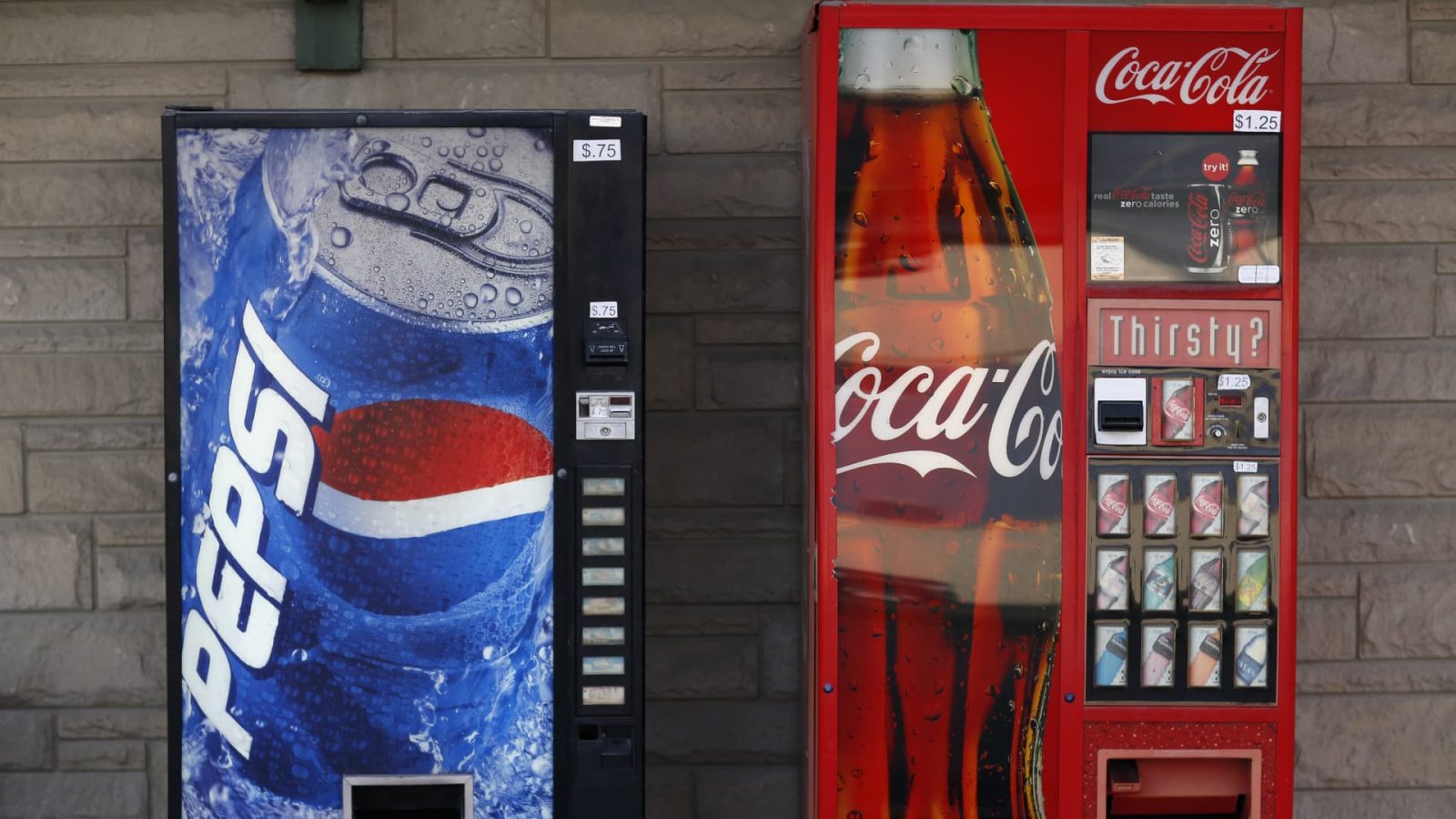Coca-Cola and PepsiCo‘s rivalry spans decades, but Coke usually comes out on top.
This quarter was no different.
The beverage leaders’ stocks have struggled this year, hurt by higher interest rates and investor concerns about the possible negative impact of weight loss drugs like Wegovy. (Coke’s $242 billion market cap beats Pepsi’s by roughly $20 billion.)
Even so, both companies topped Wall Street’s estimates for their third-quarter results and raised their full-year forecasts. Strong demand for Coke products drove the Atlanta-based company to raise its forecast, while Pepsi’s cost-management improvements have bolstered its full-year outlook for earnings.
But only Coke managed to report volume growth. The metric, which strips out the effects of pricing and currency, has become more critical to investors in recent quarters as food and beverage companies pause the price hikes that drove sales growth last year. Those same increases have also alienated some shoppers who are trying to save money on their grocery bills.
Coke’s overall volume rose 2% in the third quarter, while Pepsi reported flat beverage volume and a 1.5% decline in its food volume. In North America, the differences between the two businesses were even more stark. Coke reported flat volume, while Pepsi’s North American beverage unit saw volume fall 6%.
Coke also raised both its top- and bottom-line outlook for the full year, while rival Pepsi only upped its forecast for its full-year earnings, signaling the better outlook might not be due to higher demand for its products.
Here’s a rundown of the five key factors that helped Coke edge out Pepsi:
Pricing strategy
Coke started raising prices across its portfolio in the spring of 2021. PepsiCo followed its lead, starting its own price hikes that summer.
More than two years later, both companies reported that higher prices have boosted sales. Pepsi paused price hikes earlier this year but plans a “modest” increase next year. Coke took longer to pause its higher prices, but CEO James Quincey said in July the company is done raising them for now in the United States and Europe.
Because of the timing of their price increases, Coke’s North American drink prices were up only 5% this quarter, compared with Pepsi’s increase of 12%.
“The higher the price increase, you would expect a bigger drag on volume,” Edward Jones analyst Brittany Quatrochi said.
Better brands
But Coke is also winning over shoppers with its drinks, while Pepsi is focused on revitalizing some of its non-soda brands like Gatorade.
“Coke has been taking share from Pepsi for many, many quarters,” RBC Capital Markets analyst Nik Modi said.
When its drinks business falters, Pepsi is usually saved by its Frito-Lay unit, which includes Cheetos, Doritos and other snacks. But snacking has slowed as shoppers trade down to cheaper options in the face of Frito-Lay’s double-digit price increases.
“The reason why snacks have done so well relative to other categories is because it was really a trade down option on a meal,” Modi said.
As the price for a bag of chips has climbed, some shoppers have reached for private-label brands — or just leftovers in the fridge.
Pepsi is also getting rid of its less-profitable promotions. The strategy helps its earnings, but resulted in a 2.5% hit to its North American drink volume, executives said on the company’s conference call.
Away-from-home business
Roughly half of Coke’s sales come from away-from-home occasions, like movie theater visits or dining out, executives said during the early days of the pandemic. In the third quarter, those away-from-home purchases grew faster than the company’s at-home business, Quincey said on Tuesday’s conference call.
“There’s still a rebound and strong growth in away-from-home channels, not just some of the restaurants, but the amusements, travel, leisure, hospitality, those things,” Quincey told analysts.
Coke could also be benefiting from consumers trading down outside of the grocery store.
“If you were going to a mid-tier restaurant, maybe now you’re going to quick-serve fast food, which is where Coke has a lot of its business,” Modi said.
McDonald’s, for example, has said in recent quarters that diners trading down to its restaurants has boosted its U.S. sales. McDonald’s has served Coke products since Ray Kroc opened his first franchised location, and is the beverage company’s largest restaurant customer.
Pepsi, on the other hand, lags behind Coke with its away-from-home business, although it does have some large restaurant companies, like Taco Bell owner Yum Brands, as customers. Pepsi has not disclosed the size of this business.
International strength
Coke also has a larger international presence than Pepsi. Roughly 40% of Pepsi’s sales come from outside of the U.S., while more than 60% of Coke’s revenue is derived from international markets, according to FactSet.
“There’s stronger growth in those international markets,” Edward Jones’ Quatrochi said.
International success can offset more sluggish domestic demand, like the 6% volume decline for Pepsi’s North American beverage. But that comes at a price.
Some international markets, like Argentina and Turkey, have been dealing with hyperinflation, leading Coke to raise prices even after pausing hikes in the U.S. and Europe. And the strong dollar means Coke anticipates that currency exchange rates will dent its sales and earnings more than previously expected this year.
Franchising its bottling
The biggest difference between Coke and Pepsi isn’t found in their portfolios. It’s how they bottle their soda.
Coke works with independent bottlers who manufacture, package and ship their drinks to customers. Those bottlers know their markets well and can make their own informed decisions for their businesses.
In contrast, Pepsi owns more than three-quarters of its North American bottling operations. The strategy is meant to help the company exert more control and cut costs, but it also requires devoting resources and capital to bottling soda, a category that has faced waning demand for nearly two decades.
“Right now, I think the whole bottling owned versus not owned is showing up in the results,” Modi said.
Read the full article here










Leave a Reply